I am trying to work out how to specify the transconductance value or Kn for LTspice. I have a part I can't find a suitable model for so I'll need to create one. I've tried this before and got values that ended up being entirely wrong. So I'm trying to figure out what went wrong there so as not to make the same mistake.
The part number I tried this on before was the CD4007UBE npn/pnp transistor chip. I worked out the Kn value by wiring up the first circuit below, replacing Vcc with a variable voltage source. I cranked the voltage just a little bit at a time until current began to flow. I found the value to be 650m. The scribbled values are those measured from my multimeter. I then hooked up the 2nd circuit to measure Kn. Knowing that 8.3V is much higher than the threshold voltage, I can be sure that the transistor is in saturation.
I then solved the system of equations below for Kn. I ended up with a value of 154m (work). I used this value for my ltspice simulation and it gave me improper values for my Qpoint when I built my circuit. The value that provided the correct Qpoint was something closer to 0.6m, which is what most of the pre-built models for this chip have as well. I can't find a prebuilt model for the chip I am using now, so I need to know where I went wrong, and what LTspice is expecting for the transconductance value Kn.
EDIT
I used the following definition in ltspice after obtaining the values.
.MODEL myNMOS AKO: NMOS (VTO=650e-3, KP=.154e-3)
$$k_n = k_n'\left(\frac{W}{L}\right)$$ $$I_D = \frac{1}{2}K_n(V_{GS} - V_{TH})^2$$ $$7.4\text{m} = \frac{1}{2}K_n(960\text{m} - 650\text{m})^2$$

